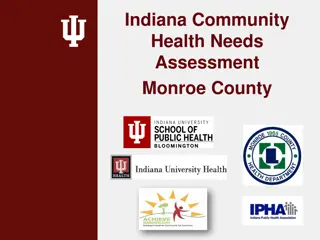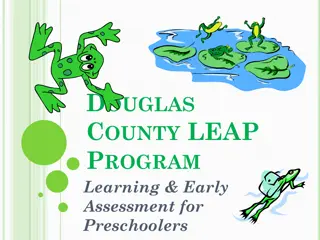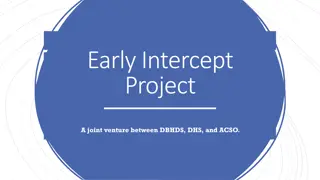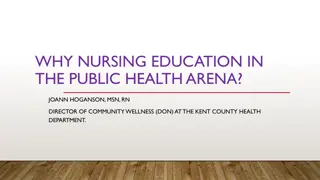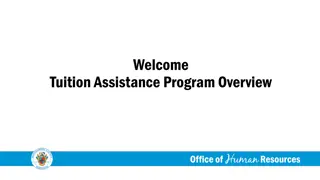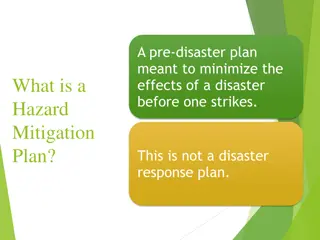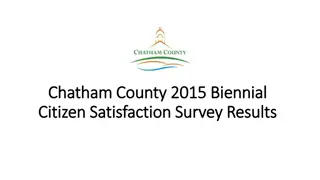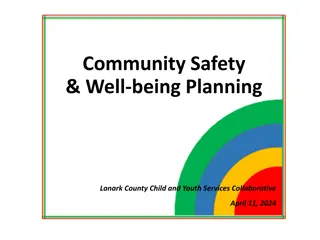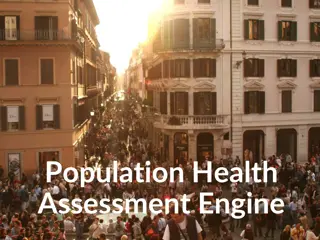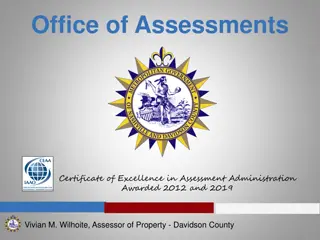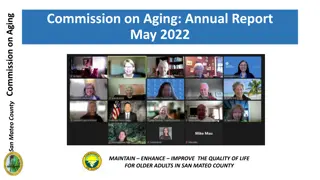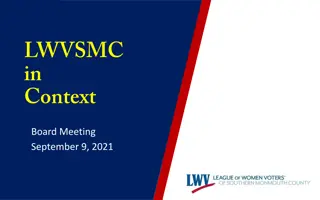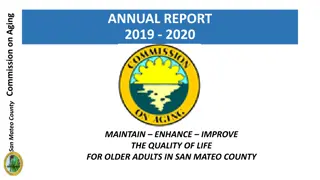Community Health Assessment for Improving Health in Onondaga County
This report discusses utilizing the community health assessment to enhance health outcomes in Onondaga County. Key topics covered include social determinants of health, morbidity and mortality rates, feedback from the community, public health framework, priority areas for intervention, and data on poverty, education levels, unemployment, and female breast cancer rates by race in the region.
Download Presentation

Please find below an Image/Link to download the presentation.
The content on the website is provided AS IS for your information and personal use only. It may not be sold, licensed, or shared on other websites without obtaining consent from the author. Download presentation by click this link. If you encounter any issues during the download, it is possible that the publisher has removed the file from their server.
E N D
Presentation Transcript
Utilizing the Community Health Assessment to Improve Health in Onondaga County January 14, 2020 CNYCC Innovation Fund meeting Rebecca Shultz, MPH Director of Community Health Indu Gupta, MD, MPH, MA, FACP Commissioner Onondaga County Health Department
Outline Social determinants of health Morbidity and mortality outcomes Community feedback Public Health framework Priority areas for intervention Questions / discussion
Poverty Poverty1 Onondaga County: 14.9% Syracuse: 32.6% Concentrated Poverty2 Syracuse has the highest rate of concentrated poverty among black and Hispanic residents in the U.S. Children in Poverty1 Onondaga County: 21.6% Syracuse: 46.8% Sources: 1. U.S Census Bureau, American Community Survey, 2013-2017 2. and Map: Jargowsky, P. A. (2015, August 9). Architecture of Segregation, Civil unrest, the concentration of poverty, and public policy. Retrieved May 2018, from The Century Foundation: http://apps.tcf.org/architecture-of-segregation
Poverty Poverty indicators by race and ethnicity, Syracuse and Onondaga County City of Syracuse Onondaga County Living in poverty 32.6% 14.9% Black or African American 41.0% 37.2% White 23.7% 10.3% Hispanic (all races) 45.1% 31.8% Source: U.S. Census Bureau, American Community Survey, 2013-2017
Education Level Adults with high school education or higher (ages 25 years and older) City of Syracuse Onondaga County High school graduate or higher 81.5% 90.8% 75.7% Black or African American 78.6% 93.3% White 87.2% Hispanic (all races) 70.2% 77.1% Source: U.S. Census Bureau, American Community Survey, 2013-2017
Unemployment Unemployment by race and ethnicity, Syracuse, Onondaga County, and NYS 18.0% 16.9% 16.8% 15.5% 16.0% Black or African American 14.0% 12.4% 12.0% White 10.0% Hispanic or Latino (all races) 8.0% 6.8% 5.1% 6.0% 4.0% 2.0% 0.0% Onondaga County Syracuse Source: U.S Census Bureau, American Community Survey, 2013-2017
Female Breast Cancer Rates, by Race, Onondaga County, 2012-2016 160 141.3 137.1 140 120 104.2 Per 100,000 100 All races 80 Black 60 White 40 30.7 19.5 19.0 20 0 Incidence Rate Mortality Rate Source: http://statecancerprofiles.cancer.gov/quick-profiles/index.php?statename=newyork
Diabetes Hospitalizations by Race, Onondaga County, 2012-2014 50 43.3 45 Per 10,000 population 40 Total 35 30 Black non- Hispanic 25 20 White non- Hispanic 15.5 15 11.5 10 5 0 Source: NYS County Health Assessment Indicators by Race and Ethnicity Notes: Data are for Diabetes as the primary diagnosis. Rates are age-adjusted
Stroke Hospitalizations and Mortality, by Race, Onondaga County Age-adjusted stroke hospitalization rate, 2012-2014 Age-adjusted stroke mortality rate, 2014-2016 300 40 35.6 35 250 Per 10,000 population Per 100,000 population 30 200 25 20.8 150 20 15 100 10 35.8 31.8 50 5 0 0 Black non-Hispanic White non-Hispanic Black non-Hispanic White non-Hispanic Source: NYSDOH County Health Indicators by Race/Ethnicity: https://www.health.ny.gov/statistics/community/minority/county/onondaga.htm
Asthma Hospitalizations by Race, Onondaga County, 2012-2014 18 16.9 16 Per 10,000 population 14 Total 12 Black non-Hispanic 10 White non-Hispanic 7.2 8 6 4.5 4 2 0 Source: NYS County Health Assessment Indicators by Race and Ethnicity Note: Rates are age-adjusted
Infant Mortality by Race, Syracuse, 2016-2018 16.0 Infant deaths per 1,000 live births 13.8 Total Black White 14.0 12.0 10.0 9.2 10.0 8.0 6.0 4.0 2.0 0.0 Source: OCHD Division of Community Health Data are provisional.
Life Expectancy 82 Life expectancy at birth by zip code, Syracuse, 2011-2014 79.8 80 78.7 78.5 77.5 78 77.2 76.8 75.9 Age (years) 76 74.6 74 72.6 72 70 68 13202* 13203* 13204* 13205* 13206 13207 13208 13210* 13224 Source: OCHD, Division of Community Health *Zip code contains nursing home or assisted living facility
Top Priority Issues by Geography Onondaga County 61.3% 55.4% 53.4% 42.6% 38.7% 84.7% 68.4% 36.5% 36.0% 32.4% 62.8% 59.5% 53.7% 43.6% 36.3% 73.9% 71.2% 60.8% 45.7% 42.2% City of Syracuse 58.9% 51.5% 56.1% 41.3% 38.4% 81.5% 65.2% 35.5% 35.5% 32.8% 59.5% 56.4% 54.9% 43.5% 36.2% 70.4% 67.0% 56.9% 42.7% 41.6% Rest of County 62.8% 57.8% 51.8% 43.5% 38.8% 86.8% 70.4% 37.2% 36.3% 31.7% 64.8% 61.4% 52.9% 43.7% 36.5% 76.2% 73.8% 63.3% 47.5% 42.5% Topic Area Features of a Healthy Community Access to health care Healthy economy/good jobs Clean environment Good schools Fresh, healthy + affordable food Addiction to alcohol or drugs Mental health issues Cancer Obesity in adults Obesity in children Violence Illegal drug use Abuse Homelessness Not enough physical activity High cost of health care Access to mental health services High cost of prescription medications Access to drug or alcohol treatment Lack of health insurance coverage Health Problems Health Behaviors/ Social Factors Health Systems Notes: 1) Onondaga County is inclusive of City of Syracuse respondents. Rest of County represents county residents excluding responses from those residing in the City of Syracuse. 2) Responses are listed in the order in which they were selected by Onondaga County Residents
Priority Areas for Community Health Interventions


